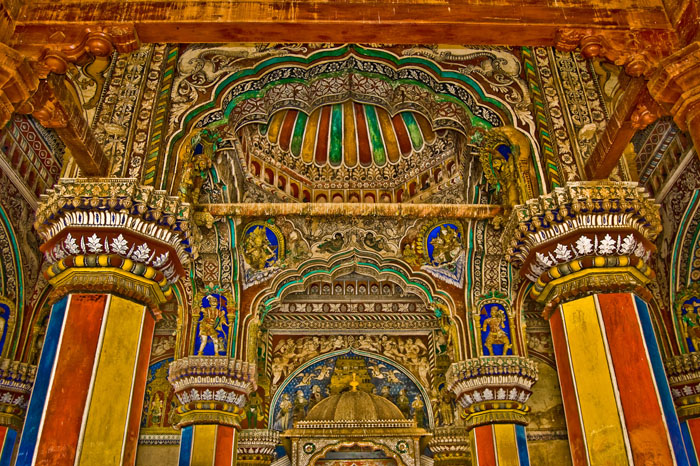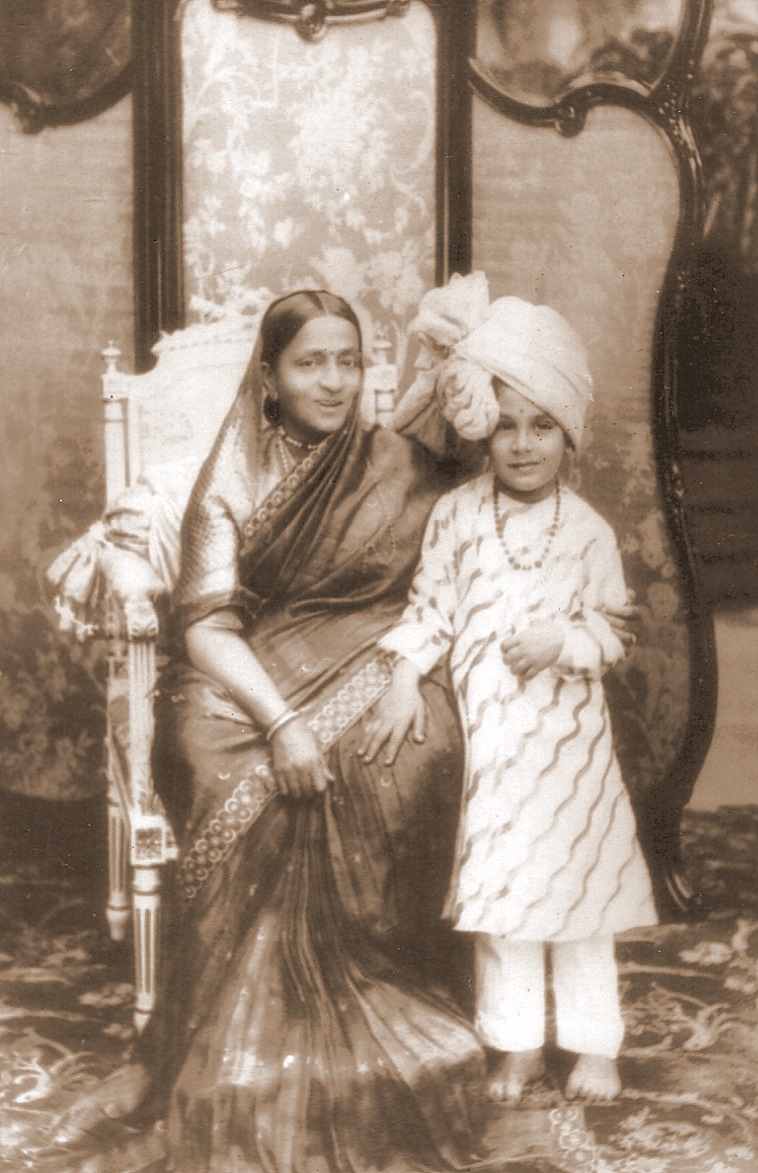|
Arni Jagir
Arni Jagir was a Jagir (estate) and a permanently settled zamindari estate that existed in the North Arcot subdivision of the North Arcot district of the erstwhile Madras Presidency in British India from 1638 to 1948. Coat of Arms The blazon of the Arni Coat of Arms is ''Per Deum et ferrum obtinui'' which means ''By God and my sword I have obtained''. History Arni jagir was granted to Vedaji Bhaskar Rao Pant by the Shahaji in 1638. Shivaji having failed in his negotiation, Sultanate of Bijapur took Arni and various other forts, and forcibly occupied the whole of Shahji's jagir in the Mysore. The Jagir of Arni was again granted as a gift to Vedaji Bhaskar pant by the Sultanate of Bijapur in 1640. In early 1677 Shivaji and his military forces set out towards Golconda. He met Kootab Shah and negotiated a secret pact for a division of his intended conquests in the Carnatic ( excluding those that earlier belonged to his father, Shahaji). The spoils were to be divided between Shiv ... [...More Info...] [...Related Items...] OR: [Wikipedia] [Google] [Baidu] |
British Raj
The British Raj (; from Hindi ''rāj'': kingdom, realm, state, or empire) was the rule of the British Crown on the Indian subcontinent; * * it is also called Crown rule in India, * * * * or Direct rule in India, * Quote: "Mill, who was himself employed by the British East India company from the age of seventeen until the British government assumed direct rule over India in 1858." * * and lasted from 1858 to 1947. * * The region under British control was commonly called India in contemporaneous usage and included areas directly administered by the United Kingdom, which were collectively called British India, and areas ruled by indigenous rulers, but under British paramountcy, called the princely states. The region was sometimes called the Indian Empire, though not officially. As ''India'', it was a founding member of the League of Nations, a participating nation in the Summer Olympics in 1900, 1920, 1928, 1932, and 1936, and a founding member of the United Nations in San F ... [...More Info...] [...Related Items...] OR: [Wikipedia] [Google] [Baidu] |
Ekoji I
Vyankojirajah Bhonsle (born 1632) or Ekojirajah I Bhonsle was the younger half-brother of Shivaji and founder of Maratha rule in Thanjavur in modern day Tamil Nadu. He was the progenitor of the junior branch of the Bhonsle family which ruled Thanjavur until the formal annexation of the kingdom by the British in 1855. Early career Venkoji was the younger son of Shahaji, a military commander in service of the Sultan of Bijapur through his younger wife Tukabai Mohite. He succeeded to the Karnataka portion of Shahaji's empire. Conquest of Thanjavur In 1673, the Nayak of Madurai invaded the kingdom of Thanjavur under the rule of the Thanjavur Nayaks and drove away the ruler. He then proceeded to place his younger brother Alagiri Nayak on the throne of Thanjavur. This was resented by Rayasam Venkanna, a high-ranking official in the court of Thanjavur who supported the cause of Chengamala Dasu, the deposed son of Vijayaraghava, the late Nayak of Thanjavur. He proceeded to t ... [...More Info...] [...Related Items...] OR: [Wikipedia] [Google] [Baidu] |
Maharaja Of Mysore
The maharaja of Mysore was the king and principal ruler of the southern Indian Kingdom of Mysore and briefly of Mysore State in the Indian Dominion roughly between the mid- to late-1300s and 1950. In title, the role has been known by different names over time, from ''poleygar'' (Kannada, ''pāLegāra'', for 'chieftain') during the early days of the fiefdom to ''raja'' (Sanskrit and Kannada, king–of especially a small region) during its early days as a kingdom to ''maharaja'' (Sanskrit and Kannada, reatking–of a formidable kingdom) for the rest of its period. In terms of succession, the successor was either a hereditary inheritor or, in case of no issue, handpicked by the reigning monarch or his privy council. All rulers under the Sanskrit-Kannada titles of ''raja'' or ''maharaja'' were exclusively from the house of Wadiyar. As India gained Independence from British Crown in 1947, Crown allies, most of which were princely India, ceded into the Dominion of India by 1950. ... [...More Info...] [...Related Items...] OR: [Wikipedia] [Google] [Baidu] |
Jayachamarajendra Wadiyar
Jayachamarajendra Wadiyar (18 July 1919 – 23 September 1974) was the 25th Maharaja of Mysore from 1940 to 1950, who later served as the governor of Mysore and Madras states. Early life Jayachamarajendra Wadiyar was born on 18 July 1919 at Mysore Palace as the only son and the last child of Yuvaraja Kanteerava Narasimharaja Wadiyar and Yuvarani Kempu Cheluvajamanni. He had three elder sisters, ''viz''., Rani Vijaya Devi, Sujayakantha Devi, and Jayachamundi Devi. Jayachamarajendra Wadiyar graduated from Maharaja's College, Mysore, in 1938, earning five awards and gold medals. He was married the same year, on 15 May 1938, to Maharani Satya Prema Kumari at Mysore Palace. He toured Europe during 1939, visiting many associations in London and became acquainted with many artists and scholars. He ascended the throne of the Kingdom of Mysore on 8 September 1940 after the demise of his uncle Maharaja Krishnaraja Wodeyar IV. He married Maharani Tripura Sundari Ammani on 6 May 1942. ... [...More Info...] [...Related Items...] OR: [Wikipedia] [Google] [Baidu] |
Krishnaraja Wadiyar IV
Maharaja Krishnaraja Wadiyar IV (Nalwadi Krishnaraja Wadiyar; 4 June 1884 – 3 August 1940) was the twenty-fourth maharaja of the Kingdom of Mysore, from 1902 until his death in 1940. He is popularly called ''Rajarshi'' ( sa, rājarṣi, lit=sage king), the name which was given by Mahatma Gandhi, for his administrative reforms and achievements At the time of his death, he was one of the world's wealthiest men, with a personal fortune estimated in 1940 to be worth US$400 million, equivalent to $7 billion at 2018 prices. He was the second-wealthiest Indian, after Mir Osman Ali Khan, Nizam of Hyderabad. He was a philosopher-king, seen by Paul Brunton as living the ideal expressed in Plato's Republic. He has been compared to Emperor Ashoka by the English statesman Lord Samuel. Acknowledging Krishnaraja Wadiyar IV's noble and efficient kingship, Lord John Sankey declared in 1930 at the Round Table Conference in London, "Mysore is the best administered state in the world". The ... [...More Info...] [...Related Items...] OR: [Wikipedia] [Google] [Baidu] |
Jayamahal Palace Hotel
Jayamahal Palace was earlier known as Arni Hall and originally owned by the Jagirdar of Arni in Tamil Nadu around 1892. TJayamahal Palace Hotel is a 4-star heritage luxury hotel that offers a pleasurable stay for its guests. References External links * {{Authority control Heritage hotels in India Hotels established in 1903 Hotels in Bangalore Indian companies established in 1903 ... [...More Info...] [...Related Items...] OR: [Wikipedia] [Google] [Baidu] |
East India Company
The East India Company (EIC) was an English, and later British, joint-stock company founded in 1600 and dissolved in 1874. It was formed to trade in the Indian Ocean region, initially with the East Indies (the Indian subcontinent and Southeast Asia), and later with East Asia. The company seized control of large parts of the Indian subcontinent, colonised parts of Southeast Asia and Hong Kong. At its peak, the company was the largest corporation in the world. The EIC had its own armed forces in the form of the company's three Presidency armies, totalling about 260,000 soldiers, twice the size of the British army at the time. The operations of the company had a profound effect on the global balance of trade, almost single-handedly reversing the trend of eastward drain of Western bullion, seen since Roman times. Originally chartered as the "Governor and Company of Merchants of London Trading into the East-Indies", the company rose to account for half of the world's trade duri ... [...More Info...] [...Related Items...] OR: [Wikipedia] [Google] [Baidu] |
Fort St
A fortification is a military construction or building designed for the defense of territories in warfare, and is also used to establish rule in a region during peacetime. The term is derived from Latin ''fortis'' ("strong") and ''facere'' ("to make"). From very early history to modern times, defensive walls have often been necessary for cities to survive in an ever-changing world of invasion and conquest. Some settlements in the Indus Valley civilization were the first small cities to be fortified. In ancient Greece, large stone walls had been built in Mycenaean Greece, such as the ancient site of Mycenae (famous for the huge stone blocks of its 'cyclopean' walls). A Greek '' phrourion'' was a fortified collection of buildings used as a military garrison, and is the equivalent of the Roman castellum or English fortress. These constructions mainly served the purpose of a watch tower, to guard certain roads, passes, and borders. Though smaller than a real fortress, they a ... [...More Info...] [...Related Items...] OR: [Wikipedia] [Google] [Baidu] |
Rajah Of Tanjore
The Thanjavur Maratha kingdom ruled by the Bhonsle dynasty was a principality of Tamil Nadu between the 17th and 19th centuries. Their native language was Marathi. Venkoji was the founder of the dynasty. Maratha conquest of Thanjavur Following the demise of Chola rule in the 13th century (specifically around 1279), the Thanjavur area came under the rule of the Pandyas and then, following the invasion of Malik Kafur, it fell into disorder. Pandya nadu very quickly reasserted their independence and added Thanjavur to their domain. Soon afterwards, however, they were conquered by the Vijayanagara Empire. The Emperor appointed his trusted Kin, who belonged to the Telugu Balija caste as Governors (Nayakas) of Madurai and Tanjavur. An internal family squabble between Chokkanatha Nayak of Madurai Nayak dynasty and his uncle Vijayaraghava Nayaka of Tanjavur led to a war and eventually ended in the defeat of Thanjavur. The rule of the Thanjavur Nayaks lasted until 1673, when Cho ... [...More Info...] [...Related Items...] OR: [Wikipedia] [Google] [Baidu] |
Pratap Singh Of Thanjavur
Pratap Singh Bhonsle or Pratapsinha (Marathi: तंजावरचे प्रतापसिंह) was the Maratha ruler of Thanjavur of the Bhonsle dynasty from 1739 to 1763. His rise to power followed three years of anarchy and civil war and restored the state to its previous greatness. His reign witnessed the Carnatic Wars and the Seven Years' War. Early life Pratapsinha was born to Tukkoji, the Raja of Thanjavur and a concubine Annapurna. Initially, he was not expected to rule as he was not a legitimate son of the Raja. However, the early demise of the king's eldest son Ekoji II who died after ruling Thanjavur for a year and a period of anarchy which followed thrust Pratap Singh on the forefront of palace intrigues. Period of Anarchy 1736–1739 Following Tukkoji's death in 1736, a period of anarchy followed. Ekoji, the king's eldest son and heir apparent succeeded to the throne but died after ruling Thanjavur for a year. However, in spite of his poor health, E ... [...More Info...] [...Related Items...] OR: [Wikipedia] [Google] [Baidu] |





